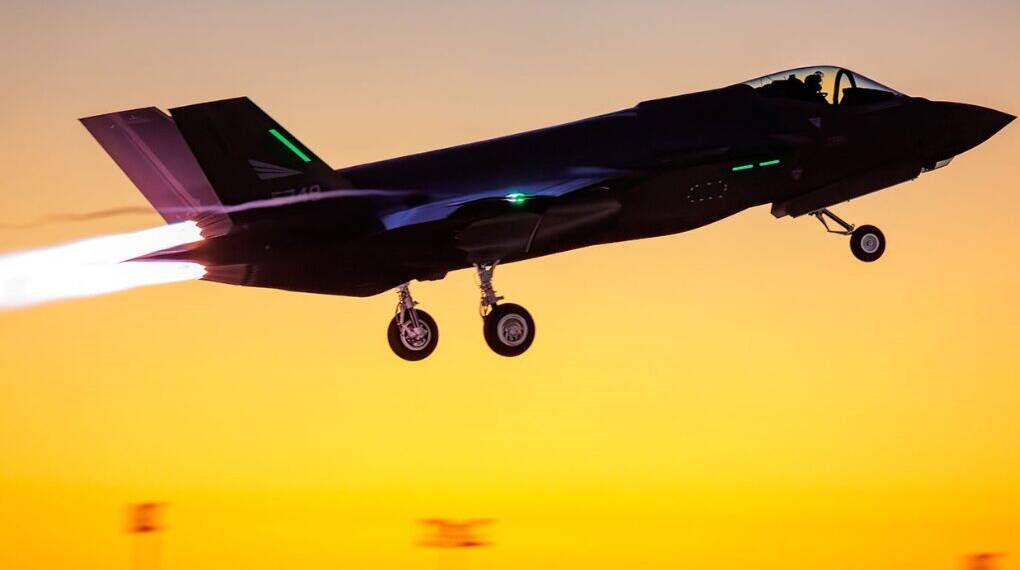The Lockheed Martin F-35 Lightning II is often touted as the world’s most advanced fighter jet—stealthy, lethal, and digitally superior. But recent developments, from a grounded British F-35B in India to Iran’s unverified claims of shooting down Israeli F-35s, challenge the narrative of its invincibility. While much of the rhetoric surrounding the jet celebrates its cutting-edge technology, it’s time to confront a more grounded question: Is the F-35 truly unbeatable, or is it a flying symbol of overhyped superiority?
A Legend Grounded
Earlier this week, a British F-35B fighter jet, part of the UK’s HMS Prince of Wales Carrier Strike Group, was forced to make an emergency landing at Thiruvananthapuram International Airport in India due to a fuel shortage. Days later, it remains grounded with unresolved technical issues, reportedly involving its hydraulic system.
Indeed, even the best machines break. But for a fifth-generation stealth fighter hailed as one of the most advanced pieces of military hardware ever built, this incident—happening far from a friendly base, in a country not equipped for its maintenance—raises important questions about its resilience and deployability in real-world scenarios.
If the world’s most sophisticated jet can be crippled not by enemy fire, but by routine mechanical failure, then its operational superiority must be reconsidered in a more practical light.
Claims and Counterclaims: Iran’s Alleged F-35 Kills
Compounding the controversy are explosive claims by Iranian state media that three Israeli F-35s have been downed in the recent flare-up of conflict. Iran says its domestically developed air defense systems intercepted and destroyed the stealth aircraft, even capturing at least one pilot. Israel, for its part, vehemently denies these allegations, labeling them as pure propaganda.
In the absence of concrete evidence—photos, video, or third-party verification—most military analysts remain skeptical of Iran’s claims. Yet, the very fact that such stories gain traction speaks to an undercurrent of doubt about the F-35’s true stealth capabilities. After all, the F-117 Nighthawk, its stealth predecessor, was shot down over Yugoslavia in 1999 by a decades-old Soviet-era missile system. If that happened once, can it never happen again?
Technological Marvel, Logistical Burden
There’s no denying the F-35’s prowess: stealth features, sensor fusion, electronic warfare capabilities, vertical landing for the B variant, and network-centric warfare readiness. It’s a flying supercomputer—and therein lies both its strength and weakness.
With great complexity comes great fragility. The F-35 requires extensive ground support, custom-built logistics software (ALIS and ODIN), and constant software updates. This makes it poorly suited for rugged, low-infrastructure deployments or sudden combat environments. It’s a plane built for the battlefield of tomorrow—assuming everything works as planned.
In the real world, wars aren’t always fought where the infrastructure is ideal or the skies uncontested.
Cost vs. Capability
The cost of a single F-35 hovers around $80–100 million, and the total program has ballooned into the trillions over decades. With that investment, expectations naturally inflate. But as the Indian episode shows, a machine is only as good as the support ecosystem behind it.
Critics have long argued that the F-35 has become a political project as much as a military one—a platform that feeds defense contracts, international alliances, and industrial supply chains. But can such a jet be called “invincible” when its mission-readiness rates have repeatedly fallen below expectations, or when it requires a technician’s laptop just to start a diagnostics check?
Myth vs. Reality
The “invincibility” of the F-35 is more myth than proven fact. Yes, it is an engineering marvel. Yes, it may dominate in controlled exercises. But invincibility is not a feature you can code into software or coat onto fuselage panels. It’s measured in reliability, adaptability, and battlefield performance—not marketing brochures or simulation reports.
The incident in India and the fog-of-war claims from the Iran-Israel conflict should serve as wake-up calls—not necessarily to downgrade the F-35, but to place it in a more realistic light.
Also read: Trump’s secret kill switch to decimate EU army
Not Invincible, but Still Indispensable?
The F-35 isn’t invincible. But then again, no war machine ever has been. What it represents is a leap forward in aerial warfare—but not a leap beyond the bounds of vulnerability. Nations that depend on it must reckon with its limits as well as its strengths. If anything, these recent events show that technological supremacy still requires logistical, tactical, and geopolitical foresight.
Because in the chaos of real-world combat, even the most sophisticated jet is only one failure, one missile, or one fuel tank away from the ground.








